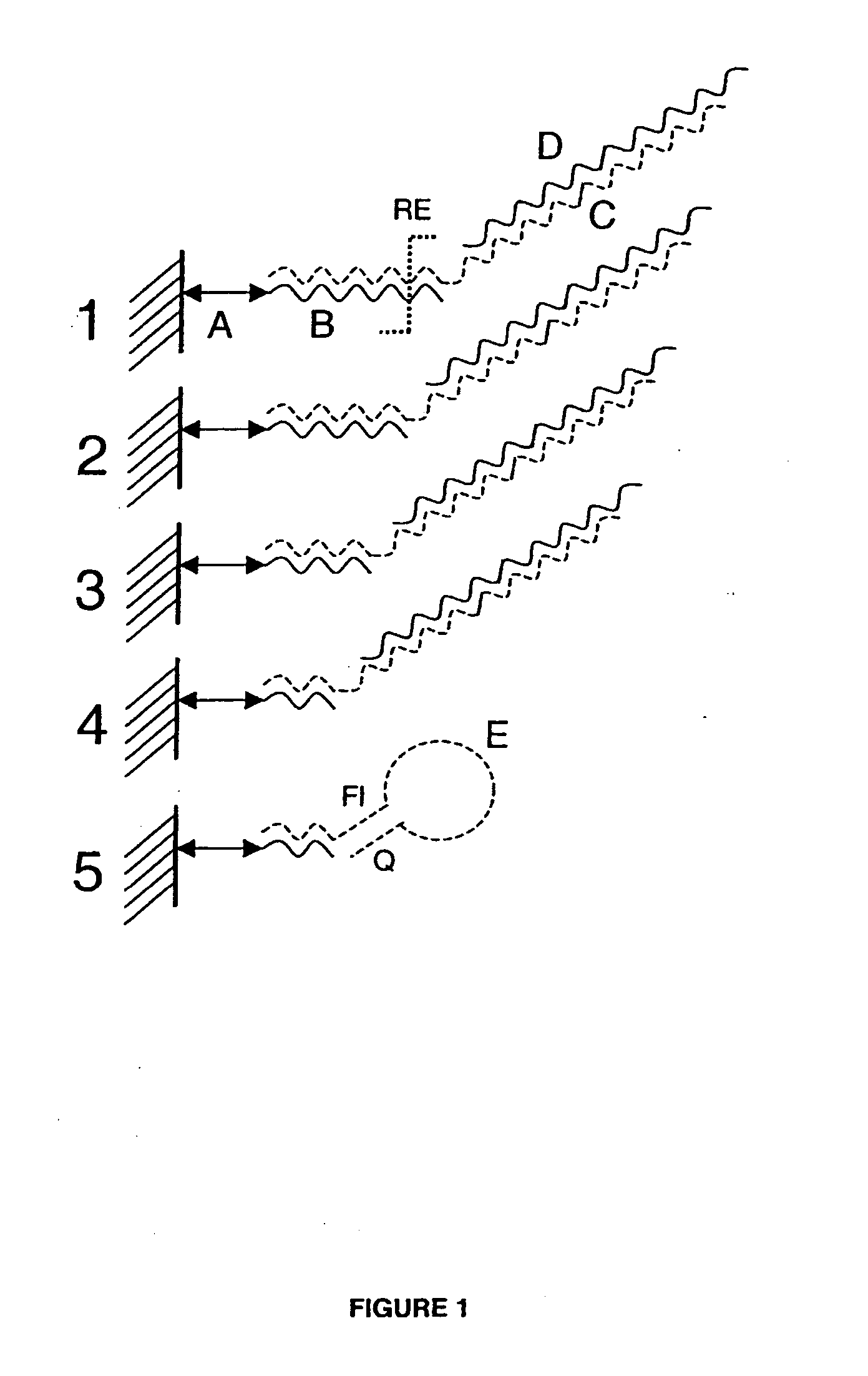Novel high density arrays and methods for analyte analysis
a high density array and analyte technology, applied in the field of molecular biology, can solve the problems of high manufacturing cost, high cost of specialized and expensive instruments, and limited number of molecules on the array, and achieve the effect of high efficiency us
- Summary
- Abstract
- Description
- Claims
- Application Information
AI Technical Summary
Benefits of technology
Problems solved by technology
Method used
Image
Examples
example 1
Detection of Nucleic Acid Sequence Variations in a Sample
[0108] An array of capture probe sets is used to detect a number of 1000-10000 SNP's or other known sequences using a limited number of features on a metal oxide substrate. The capture probe set sequences are constructed and blasted to GenBank® Database sequences. Each first fragment of a bipartite probe consists of a 5′-prime linking moiety (“A” in FIG. 1) thiol or amine or carboxyl or a photo-reactive linkage. Each first fragment comprises a temperature tag sequence with length of 10-30 nucleotides (“B” in see FIG. 1) and has a binding region (“RE” in FIG. 1) for a restriction enzyme. A set of first fragments is covalently coupled to the substrate as well-know in the art. A number of distinct first fragments is mixed together (1+2+3+4, see FIG. 1) to form a set of distinct first fragments which is covalently attached to a predefined region or spot on the substrate. Each of these first fragments within a set has a different ...
PUM
| Property | Measurement | Unit |
|---|---|---|
| Temperature | aaaaa | aaaaa |
| Temperature | aaaaa | aaaaa |
| Temperature | aaaaa | aaaaa |
Abstract
Description
Claims
Application Information
 Login to View More
Login to View More - R&D
- Intellectual Property
- Life Sciences
- Materials
- Tech Scout
- Unparalleled Data Quality
- Higher Quality Content
- 60% Fewer Hallucinations
Browse by: Latest US Patents, China's latest patents, Technical Efficacy Thesaurus, Application Domain, Technology Topic, Popular Technical Reports.
© 2025 PatSnap. All rights reserved.Legal|Privacy policy|Modern Slavery Act Transparency Statement|Sitemap|About US| Contact US: help@patsnap.com


